
Montreal-based Atelier L’Abri has completed a Passive House retrofit in the southern Quebec village of Frelighsburg, Canada. Named Maison Melba, the project saw a former 1970s car garage transformed into a living space that is also open to the community for collaborative projects.
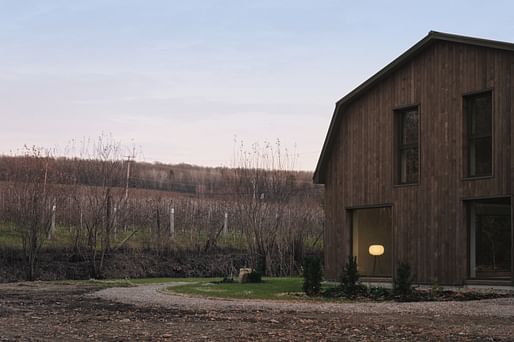
The project brief and program were inspired by the fertile ecosystem of Frelighsburg, resulting in a scheme where, as Atelier L’Abri puts it, “beauty is in harmony with performance.” Outside, an Écomestible-designed landscape holds a greenhouse and a garden dedicated to small-scale vegetable production, while inside, the main building houses a residence, work studio, workshop, and a culinary production and meeting space.
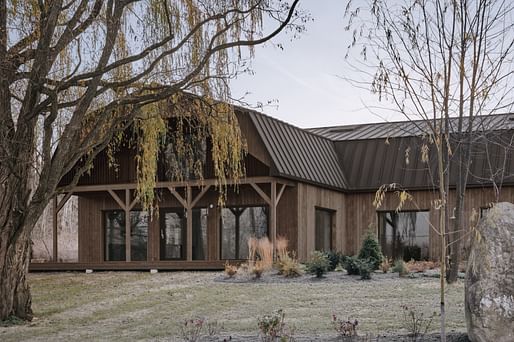
The exterior of the building is defined by a “noble and timeless look that blends with the countryside.” A steel roof is paired with wood plank cladding that gradually shifts from brown to grey under the influence of time and climate. “Beneath the large weeping willow tree, the long horizontal structure of the former garage will age quietly in the landscape of native plants,” the design team explains.
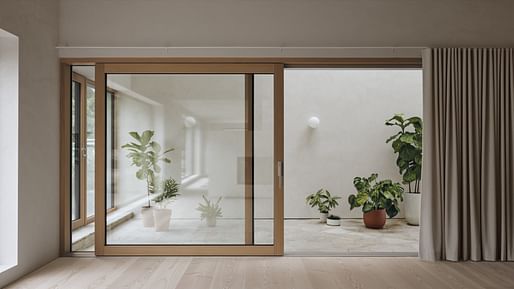
The architectural plan is defined by a “large interstice” slicing through the center of the building. Beneath a high skylight, a local natural stone floor extends the landscaping indoors to create a transitional space between the house and the creative areas. The entrance doors to the residence and the workshop each open onto the narrow common alley lined with plants.
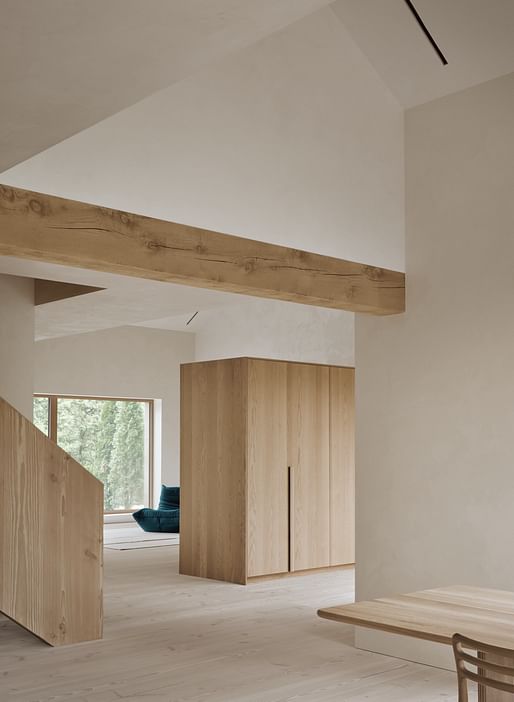
Inside, the home’s open plan is softly punctuated by furniture. Throughout the interior, the sequence of spaces is “composed of small moments conducive to the appreciation of materials, details, and nature,” reinforced by elements such as a douglas fir floor, lime-coated walls, white oak furniture, a large hemlock structure, tall linen curtains, and large wood-frame windows.

The project’s Passive House approach included carefully dismantling the garage’s original envelope while preserving the wood frame. A new double-stud wall structure was constructed within the existing skeleton to allow for increased insulation thickness while reducing thermal bridges. Inspired by ancient constructions, the thick walls are filled with cellulose fiber, a natural insulation material made from recycled paper. Outside, the cladding is composed of ecological and insulating sheathing panels made from entirely recycled wood fiber.
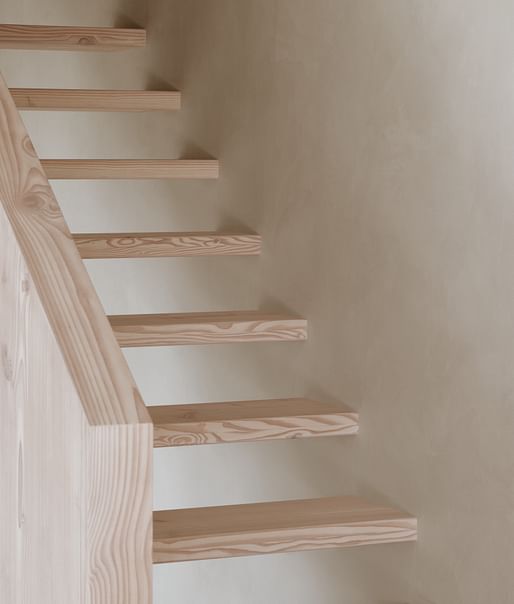
The home is one of several recently completed residential projects to feature in our editorial. Last week, we profiled an oceanside Nova Scotia home designed as a “prototype for modest living,” while earlier this month, we reported on Atelier Bow-Wow’s first U.S. home, featuring a large ‘umbrella’ roof in the Sierra Nevadas.

Other recently completed homes from our news reporting include a cantilevering modular treehouse peeking through the Estonian wilderness, a Kyoto house renovation described as a ‘home for tea and life,’ and a San Fransisco home reimagined by Mork-Ulnes and Alison Damonte following a fire in the previous structure.
No Comments
Block this user
Are you sure you want to block this user and hide all related comments throughout the site?
Archinect
This is your first comment on Archinect. Your comment will be visible once approved.